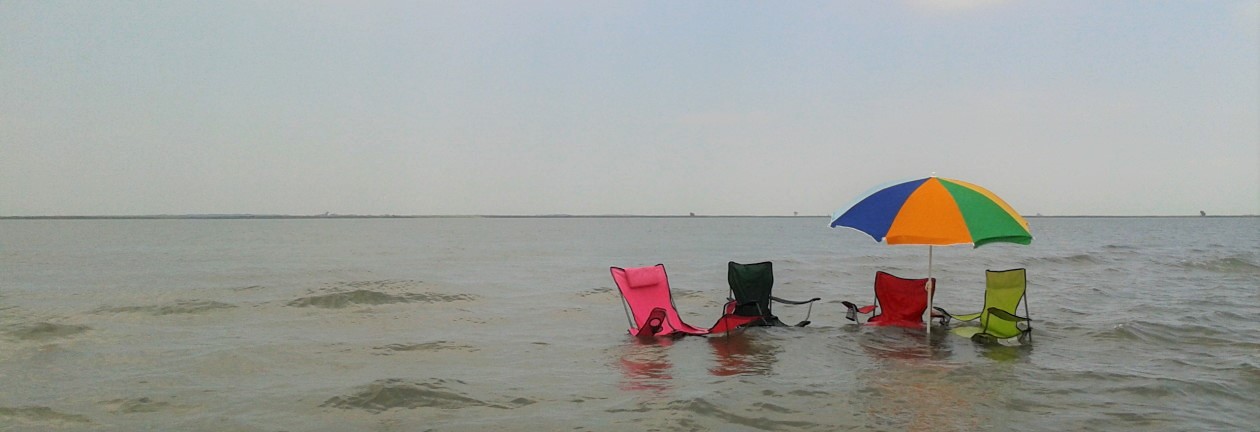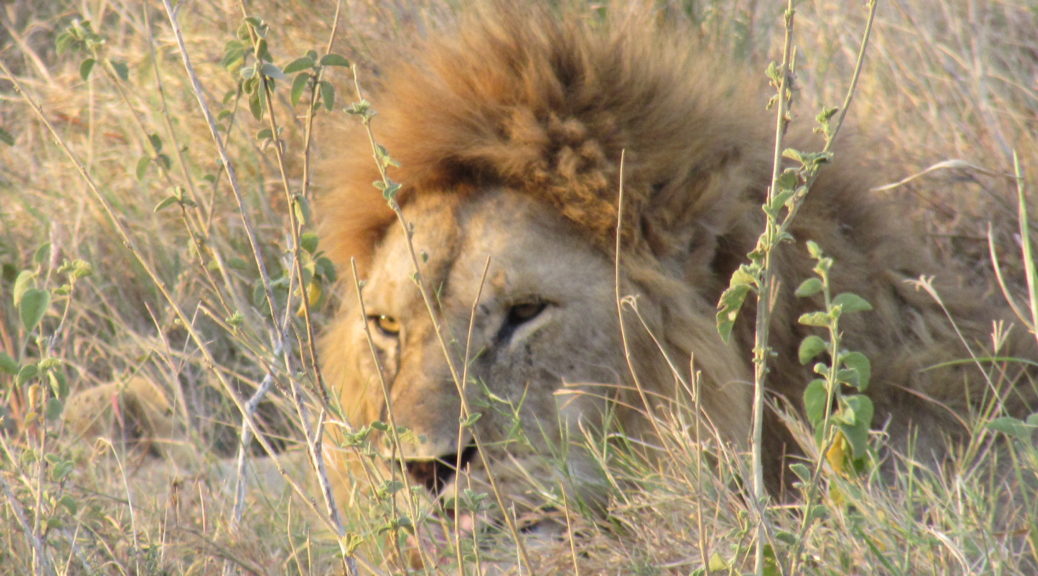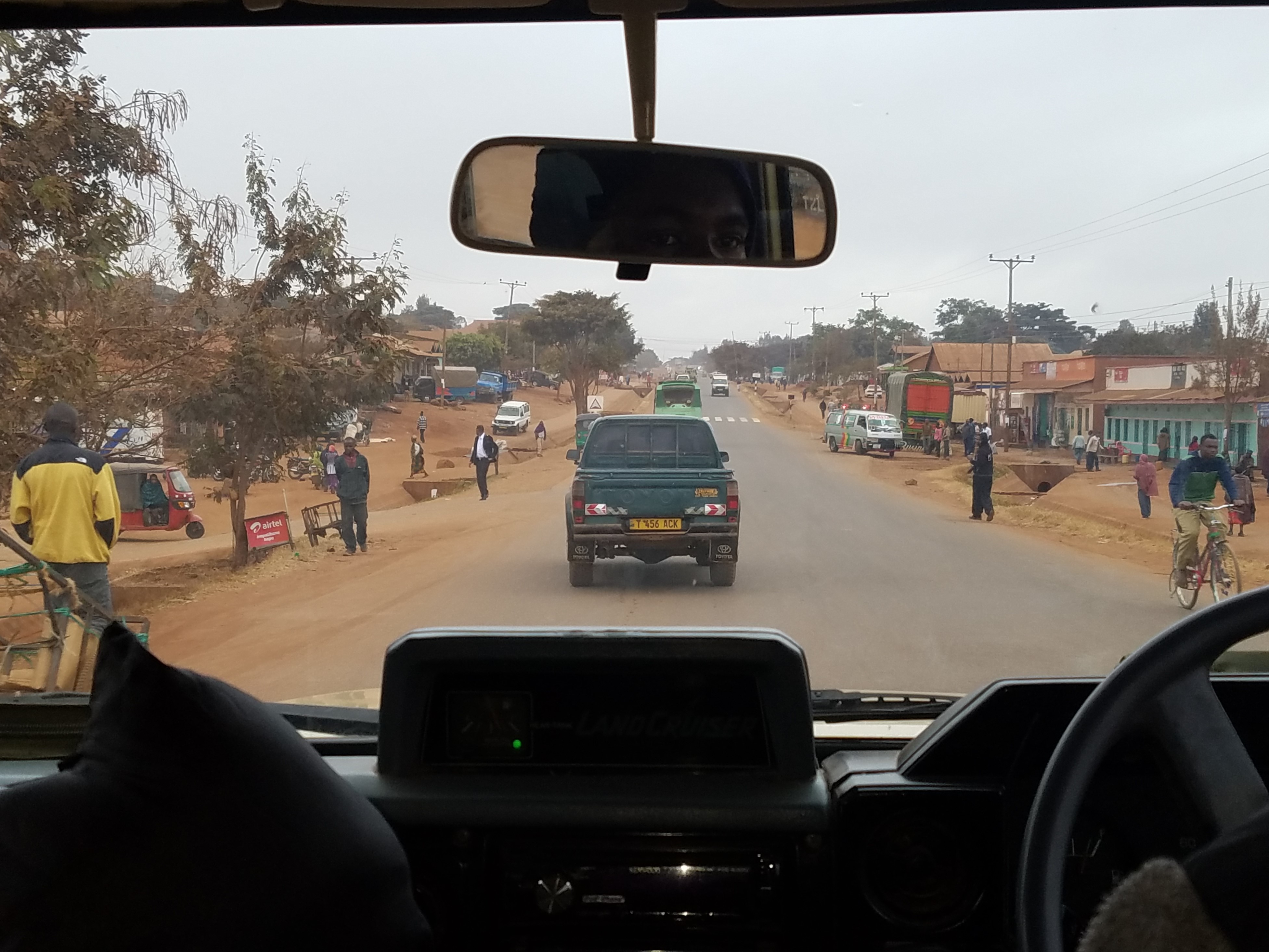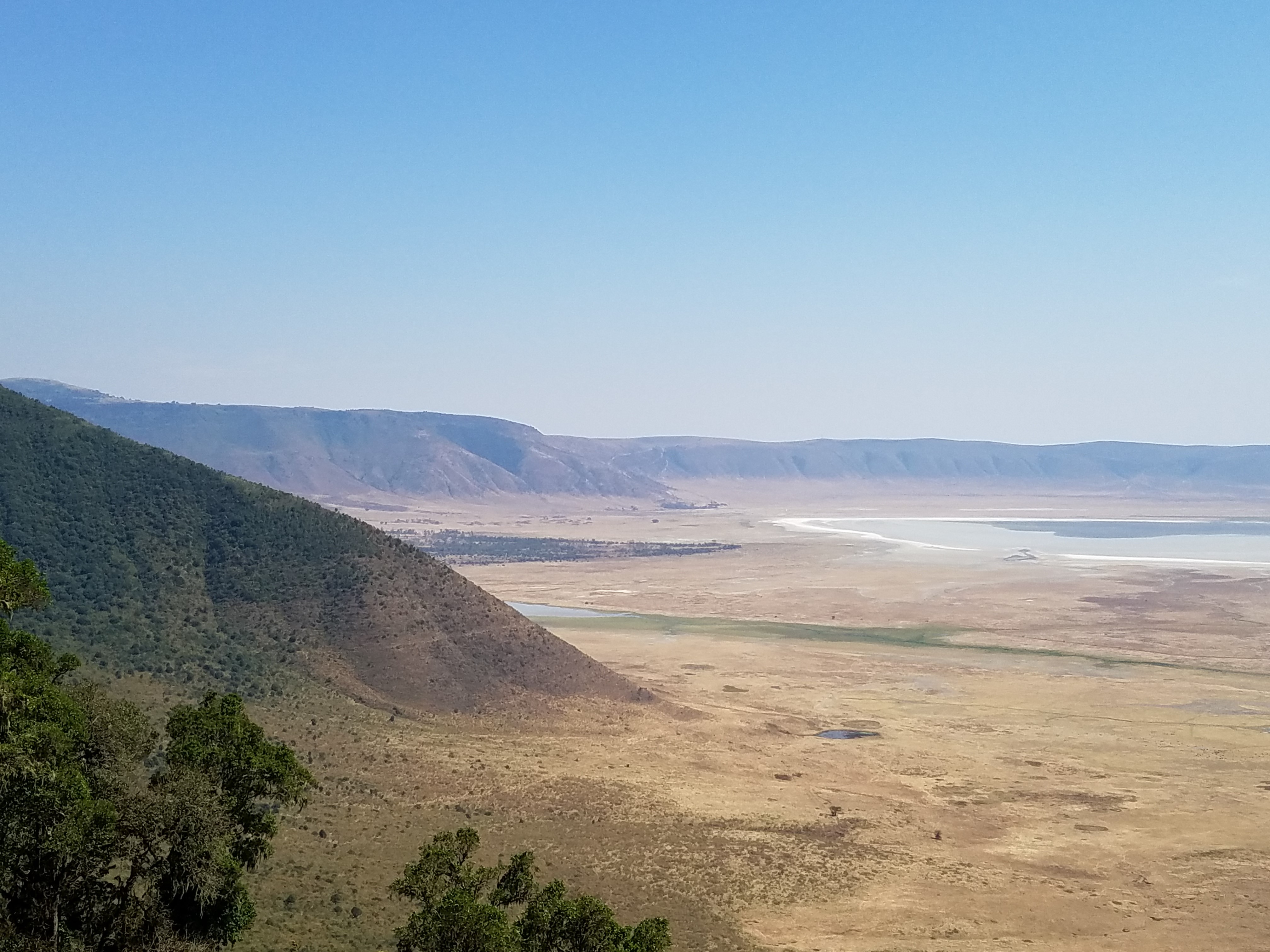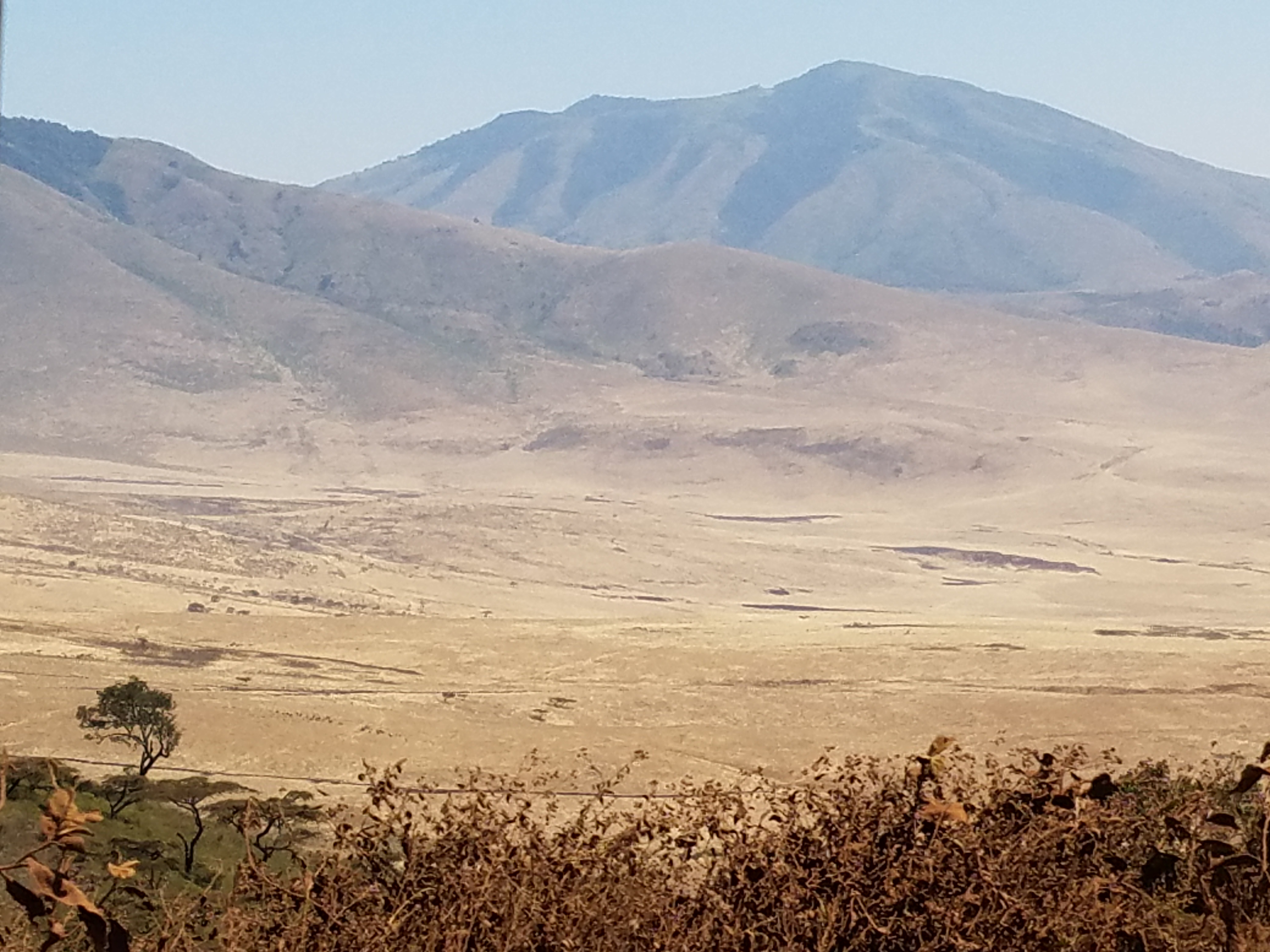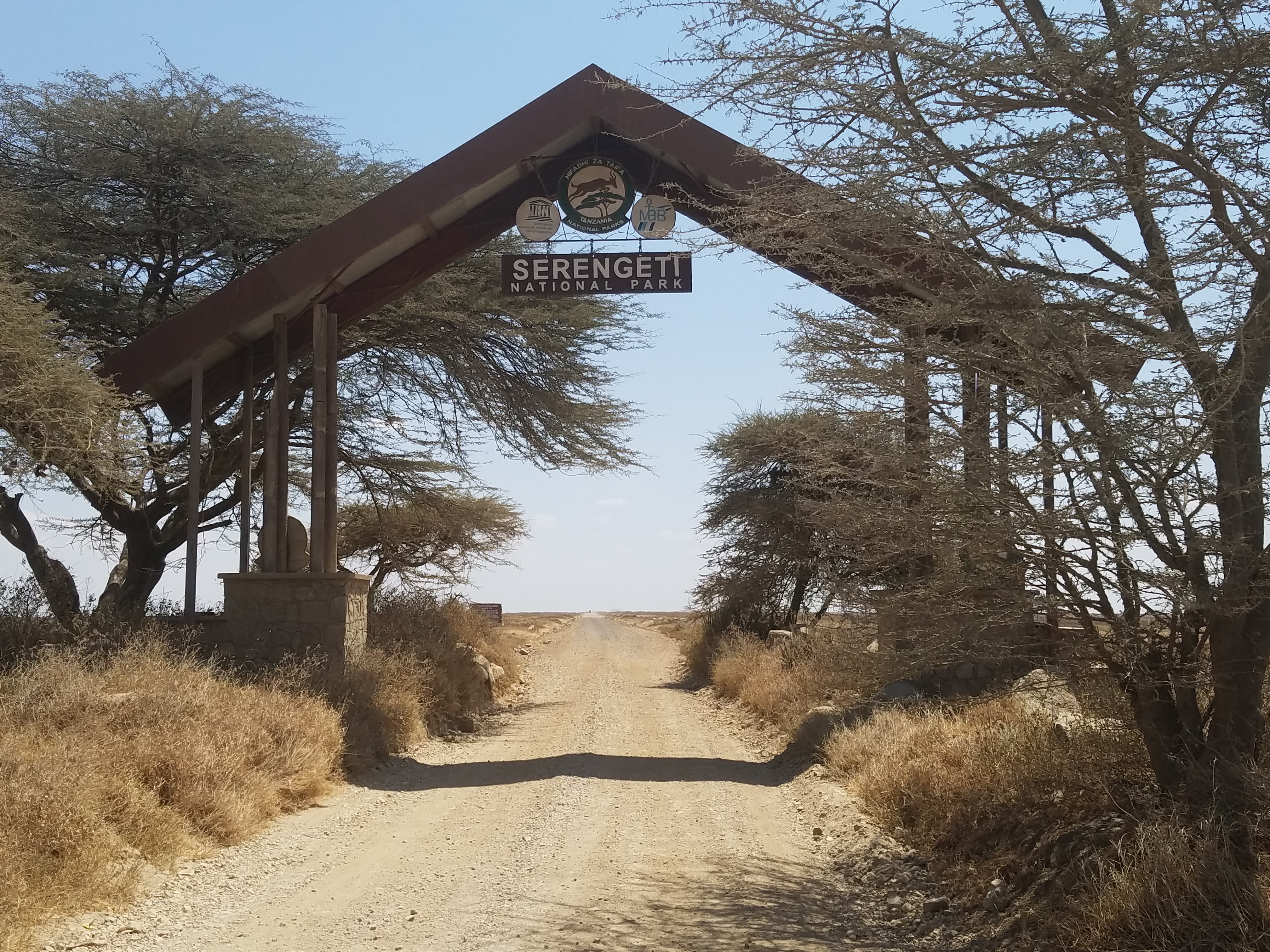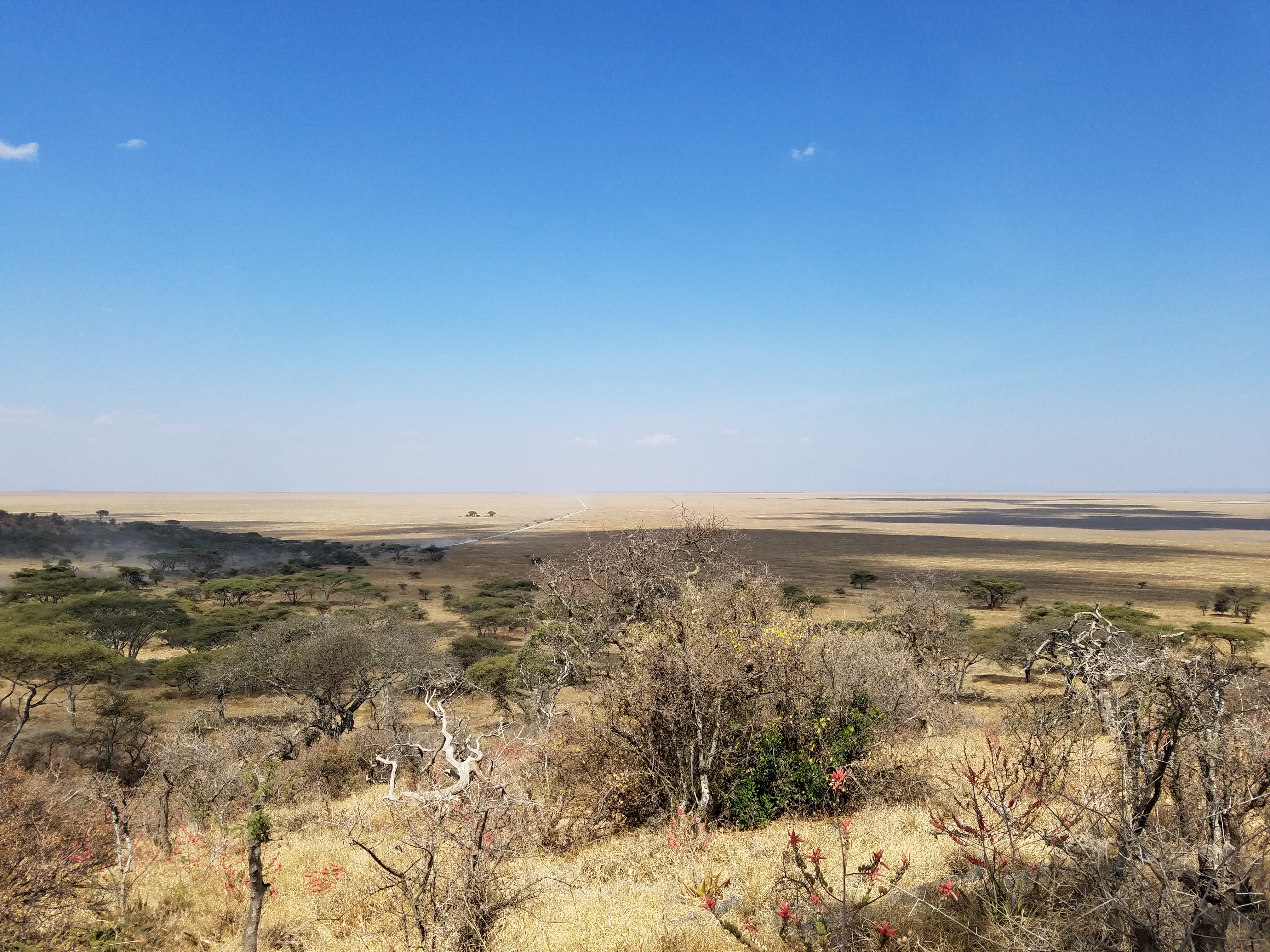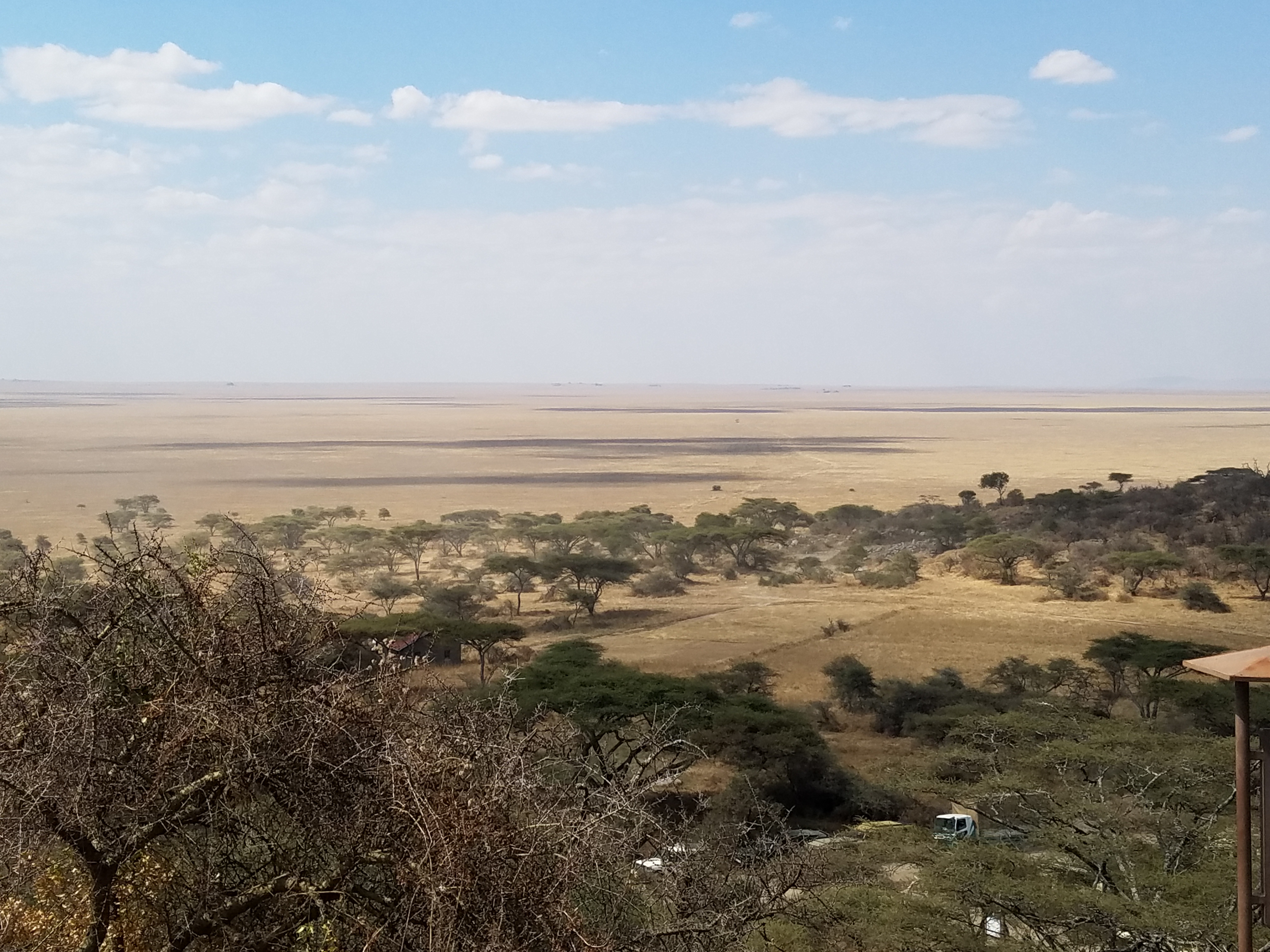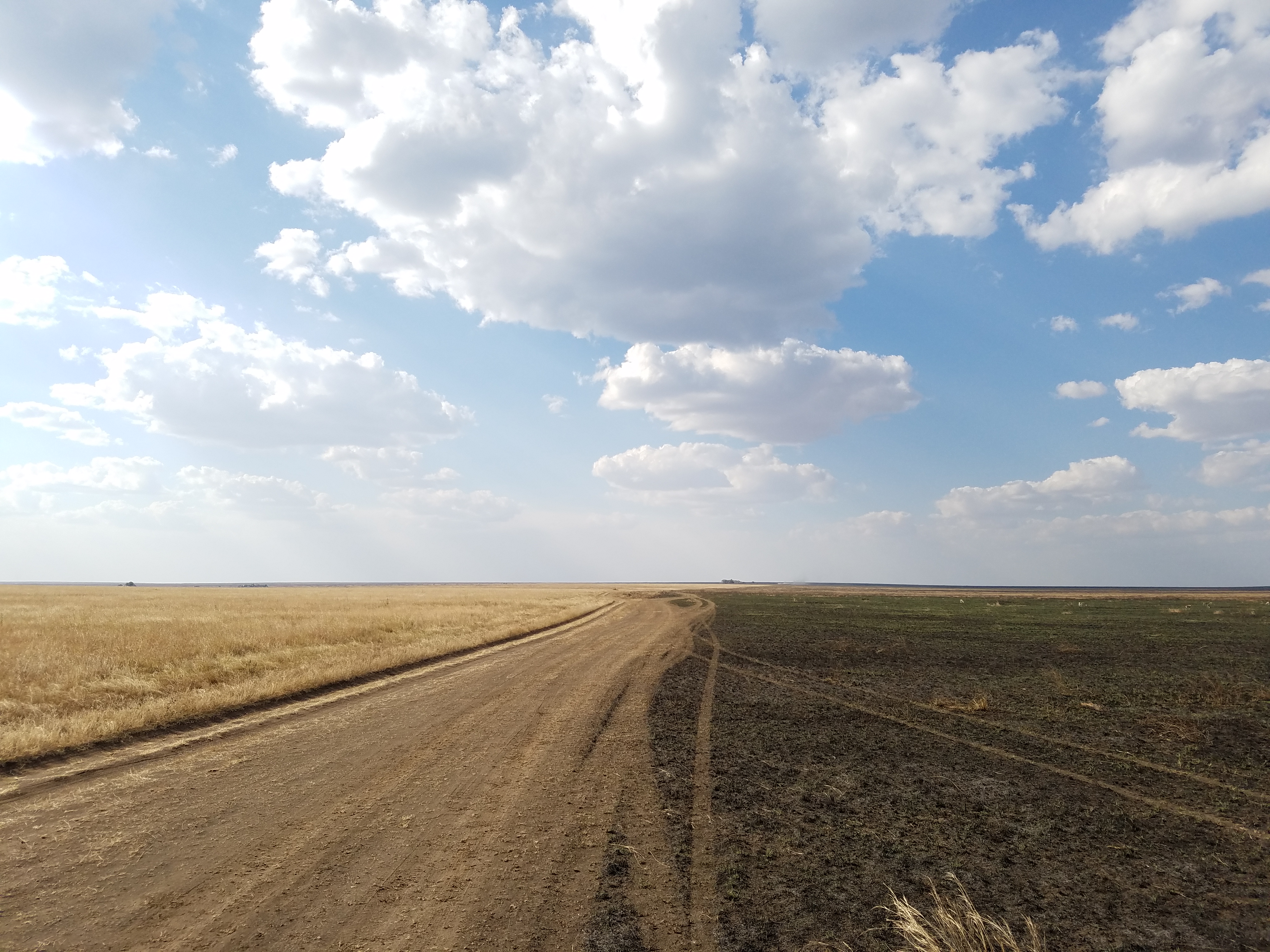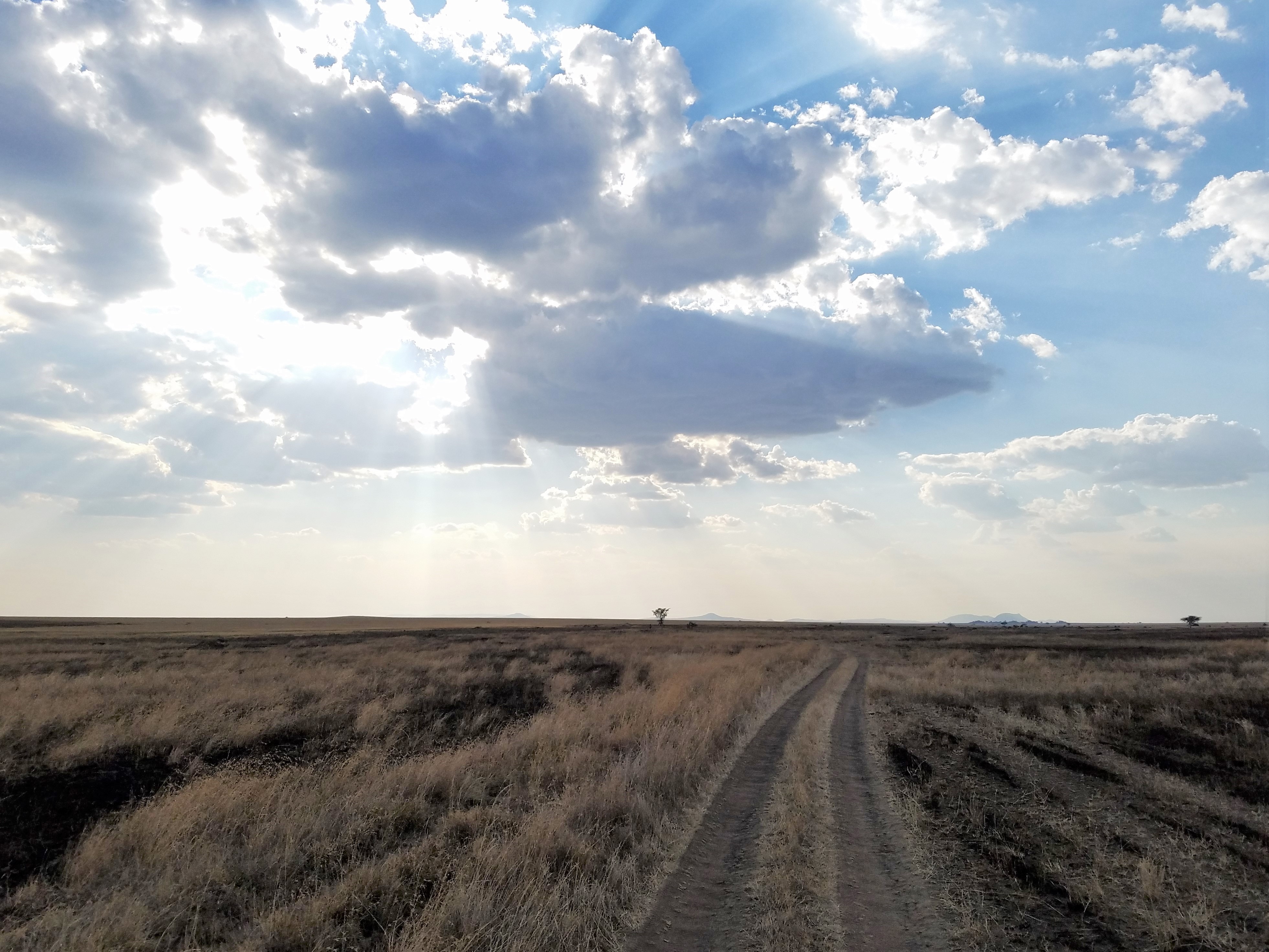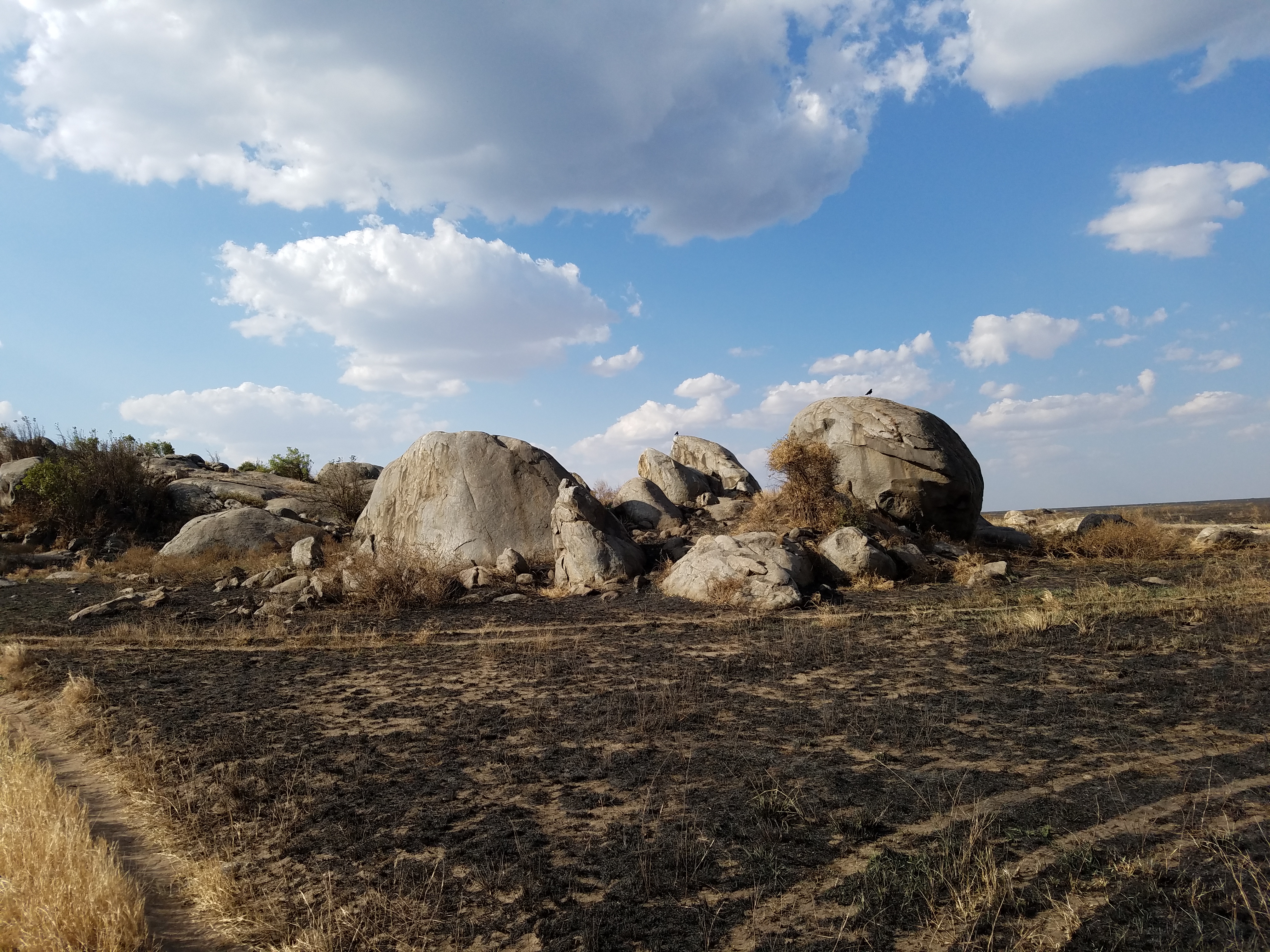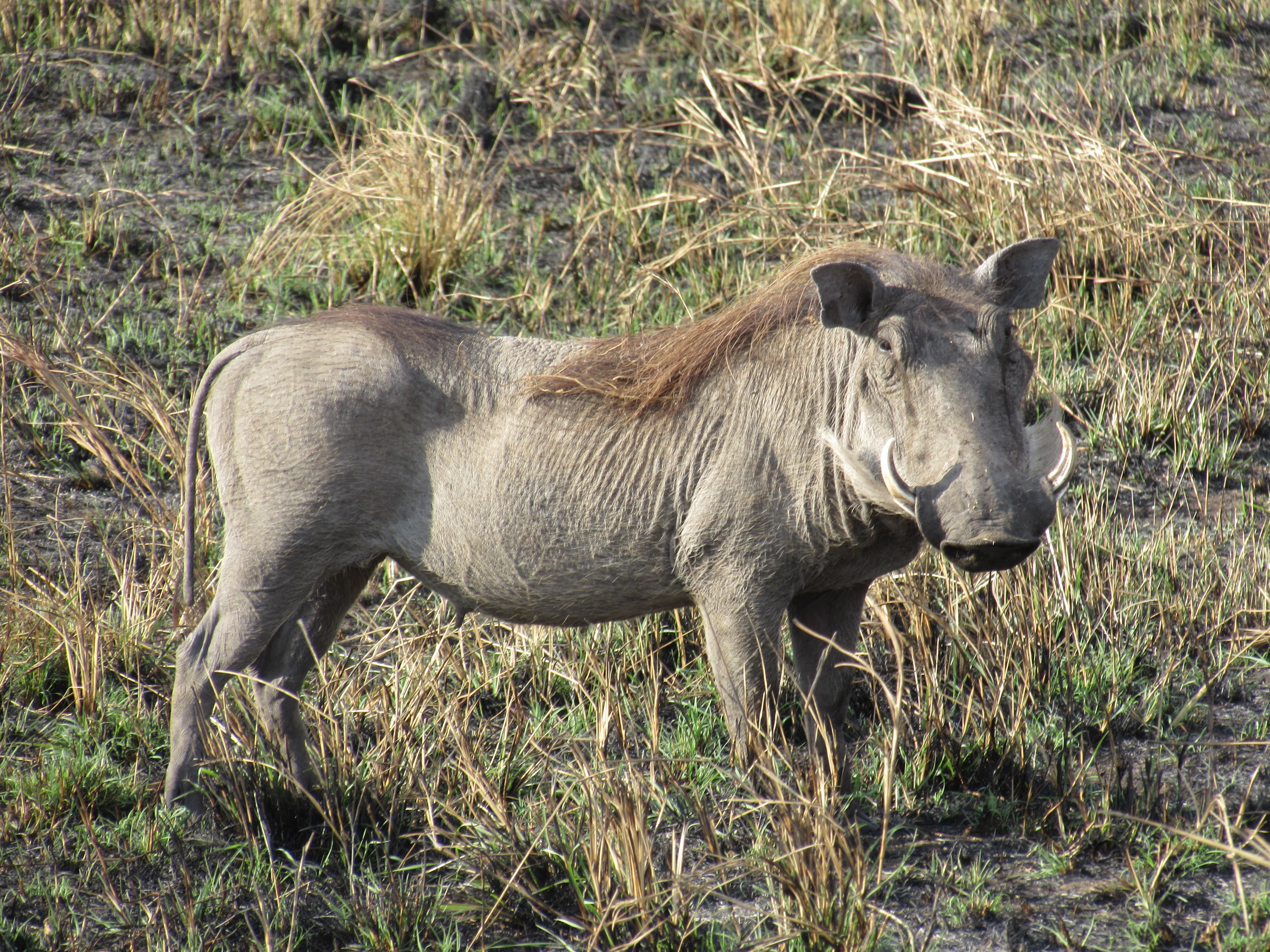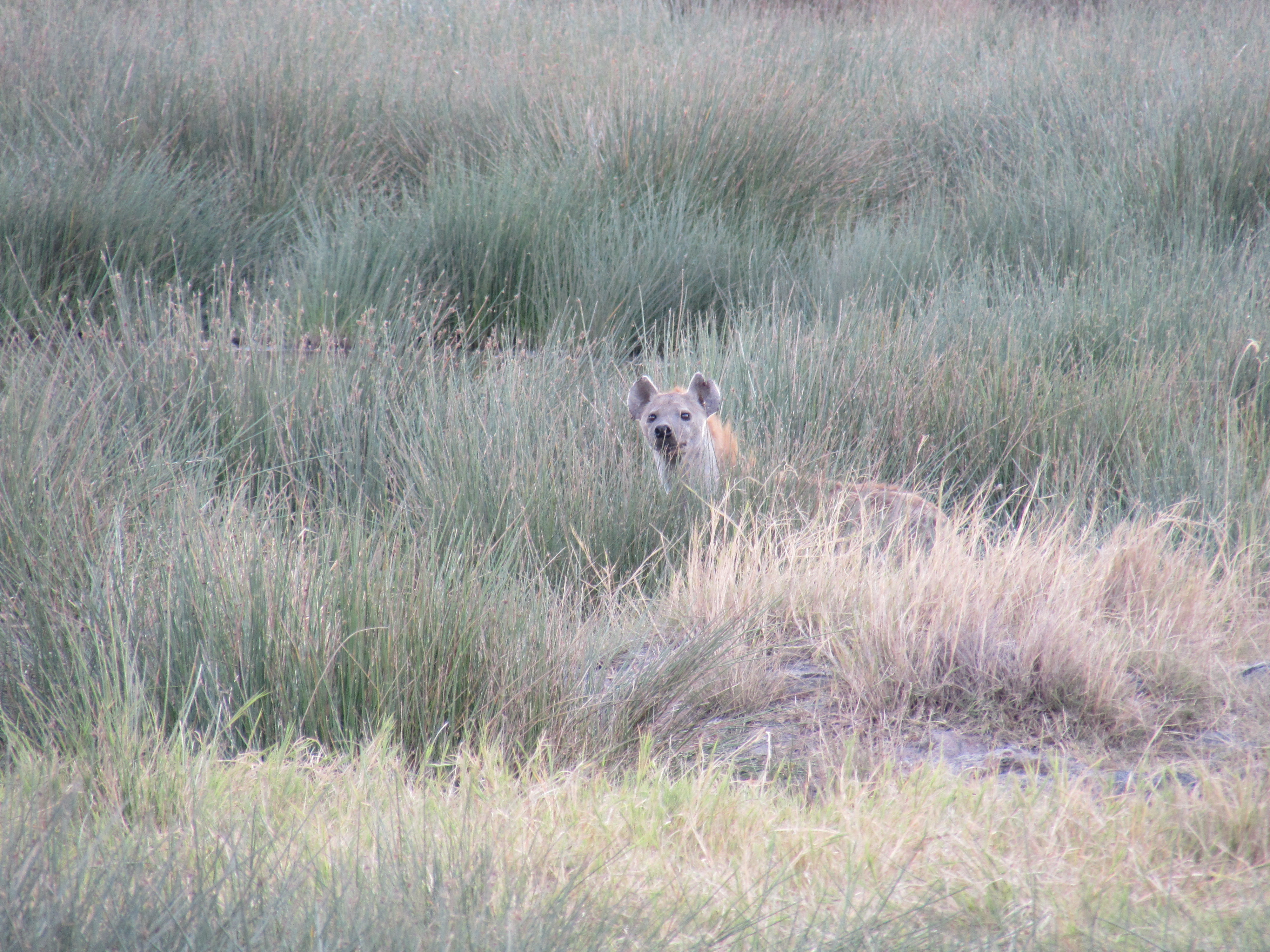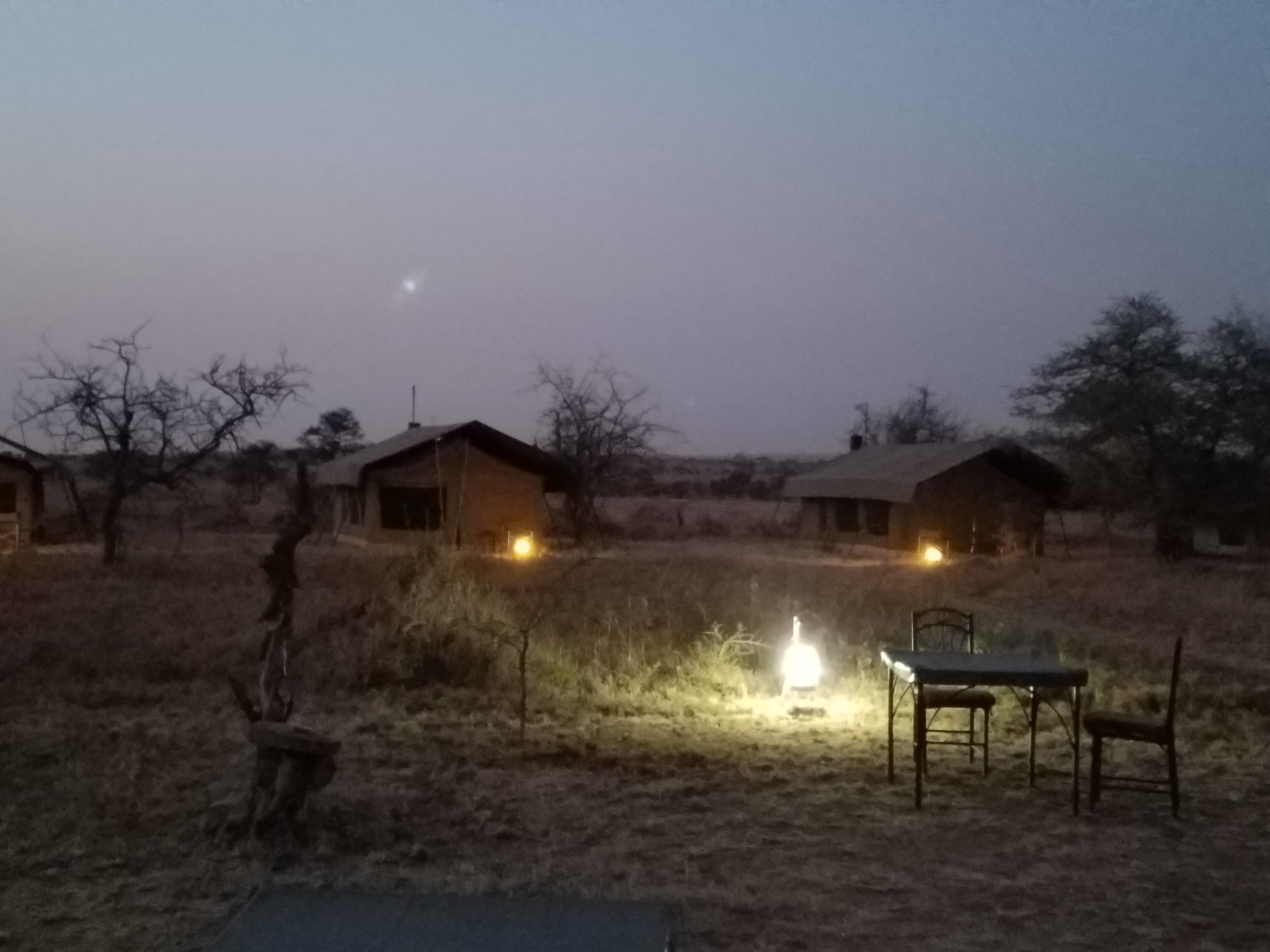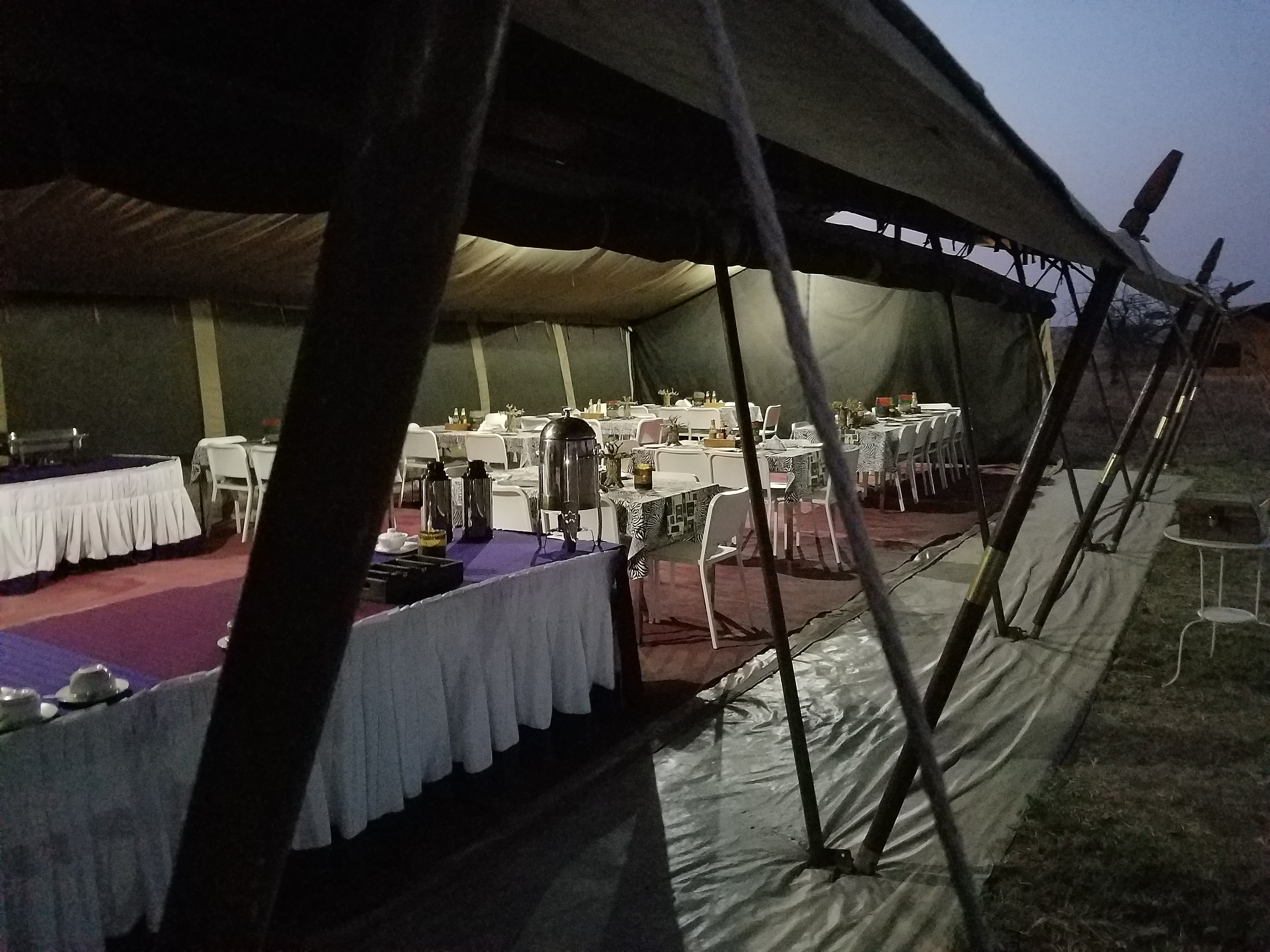We departed the Flamingo Safari Lodge at an early hour knowing that we needed to cover nearly 100 miles to reach the Serengeti by the end of the day. I’m sure most people are thinking… “100 miles? That’s not very far.” Let me tell you, it wasn’t an easy trip.
Driving through the town of Karatu we learned that it had the nickname “dusty city”. Literally, everything had a reddish brown hue from the layer of dust that settles everywhere. In the early morning, many folks were busy dampening the ground with water to help mitigate the problem.
At the gate to Ngorongoro Conservation Area, which was only a few miles from Karatu, we were required to purchase the necessary permits to enter the park. As part of the price of the safari, Agama Tours would cover the purchase of all permits and entrance fees. Unfortunately, this process took a considerable amount of time. As explained by Peter, a new system for payment has been terribly slow and is causing logjams at the gates. On the upside, the park entrance had a coffee shop, gift store, information, and bathrooms.
 Baboons inspect the supply shipments
Baboons inspect the supply shipments
Once cleared to enter, we proceeded into the dense forest along the narrow, bumpy dirt road, wildly twisting back-and-forth as we ascended the south rim of the crater. At the summit came our first look into this magnificent geological wonder.
The Ngorongoro Crater is the worlds largest inactive, intact and unfilled volcanic caldera — in 2013, it was named as one of Africa’s Seven Natural Wonders. Inside the rim, lies about 100 square miles of mostly flat land that serve as a grazing location for many species. Our itinerary will lead us down into the caldera on Friday where we hope to see one of the 17 remaining black rhinos.
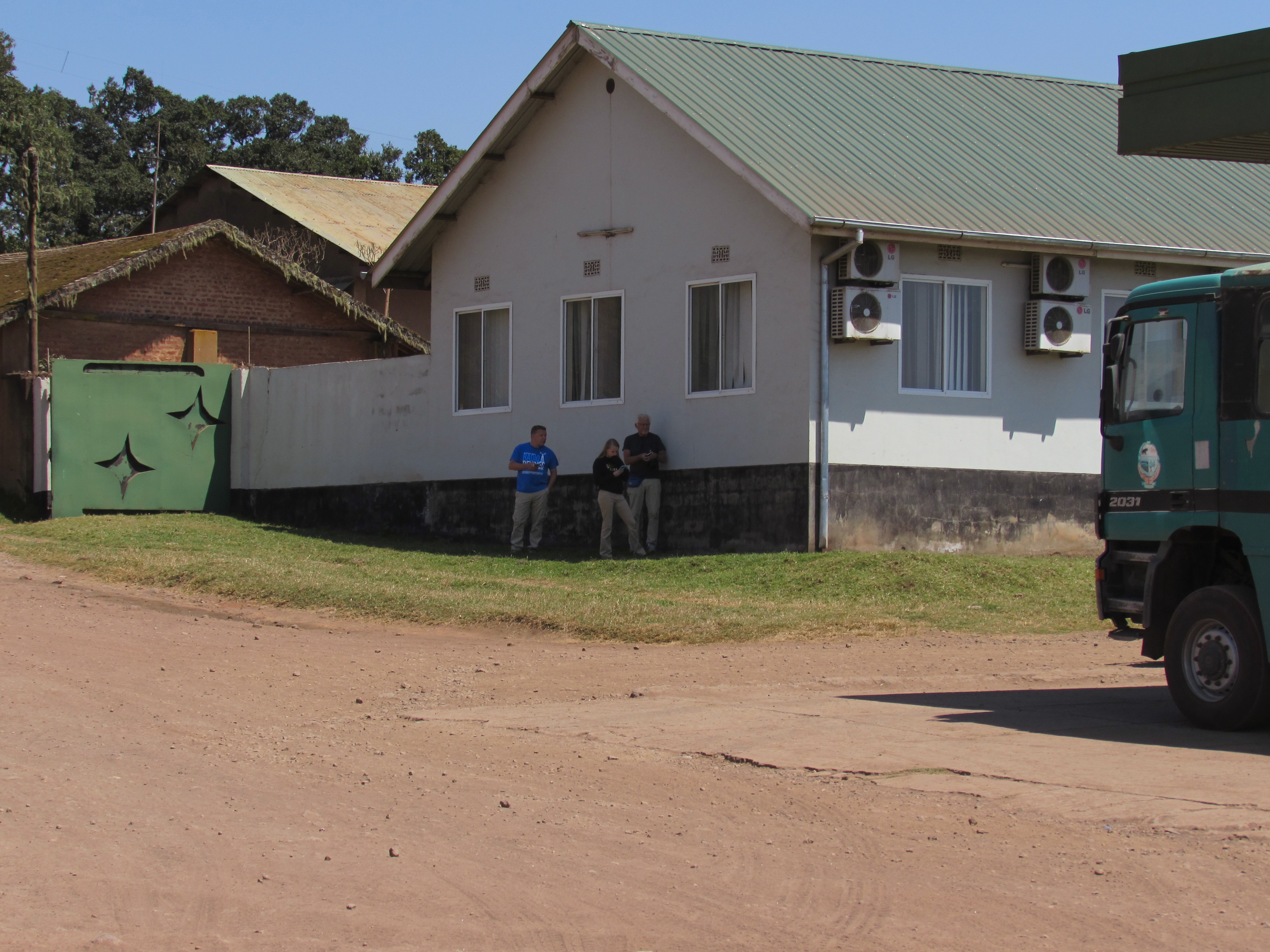 I think we found a weak WIFI signal!
I think we found a weak WIFI signal!
The road through the conservation area and into the Serengeti National Park was ridiculously rough — I was certain my fillings were going to shake out. And, I believe Peter later referred to it as the “Serengeti massage”. To travel here in any ordinary vehicle would be nearly impossible.
The endless migration of Land Cruisers made the 2 hour drive an exercise in patience. Every time a vehicle passed, we would close all of the windows for a few seconds to limit the amount of dust we inhaled. We did this a couple times per minute during most of the drive. And despite our attempts, we all had nasal passages that were literally packed with dirt.
A few miles into the Serengeti National Park we arrived at the Naabi Hill park office to take care of another permit. The location was set up perfectly as a picnic area and had a fantastic vantage point look out over the Serengeti.
Continuing further into the park, it was apparent as to how it was named. Serengeti mean “endless plains” in the Massai language. The terrain in many places went from the golden brown to a charcoal black as controlled burns have been used to allow the new green grass shoots to take root and gain exposure to the sun.
Despite the wide open spaces, animals could be seen everywhere.
 Kori Bustard, Africa’s largest flying bird
Kori Bustard, Africa’s largest flying bird
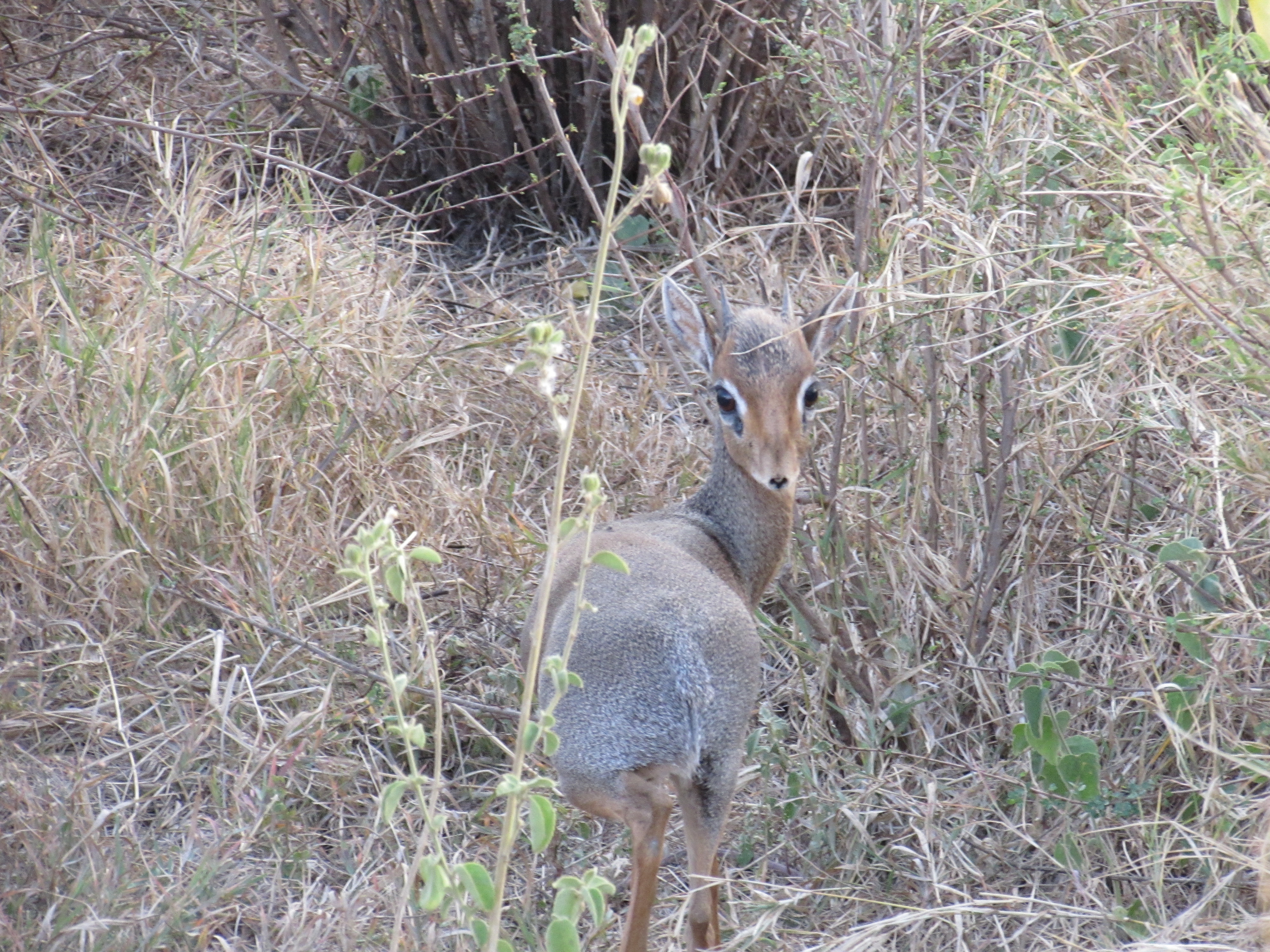 The Dik-Dik is a miniature antelope growing up to 17″ tall.
The Dik-Dik is a miniature antelope growing up to 17″ tall.
Driving around the outcrops of large mounds of boulders in search of big cats, Taylor asked, “Is that real? Or is that a sculpture carved in stone?” What the…? Blending in perfectly by color and shape was an elephant standing up on the hill. Peter said he’d seen tracks leading up there before, but never actually caught the animal in the act.
We had the good fortune of coming upon a male and female lion in the process of courting. They eventually mated as a half dozen trucks were parked within gawking distance. It is unusual to see this as it isn’t necessarily mating season.
The scene actually was double feature — lion porn to the east and the most amazing sunset to the west.
We ended our long day at the Serengeti Wild Camp. We had two tents that were outfitted with mosquito netted beds, private hot showers and private toilets. As camping goes, this was true luxary. “Glamping”, perhaps.
